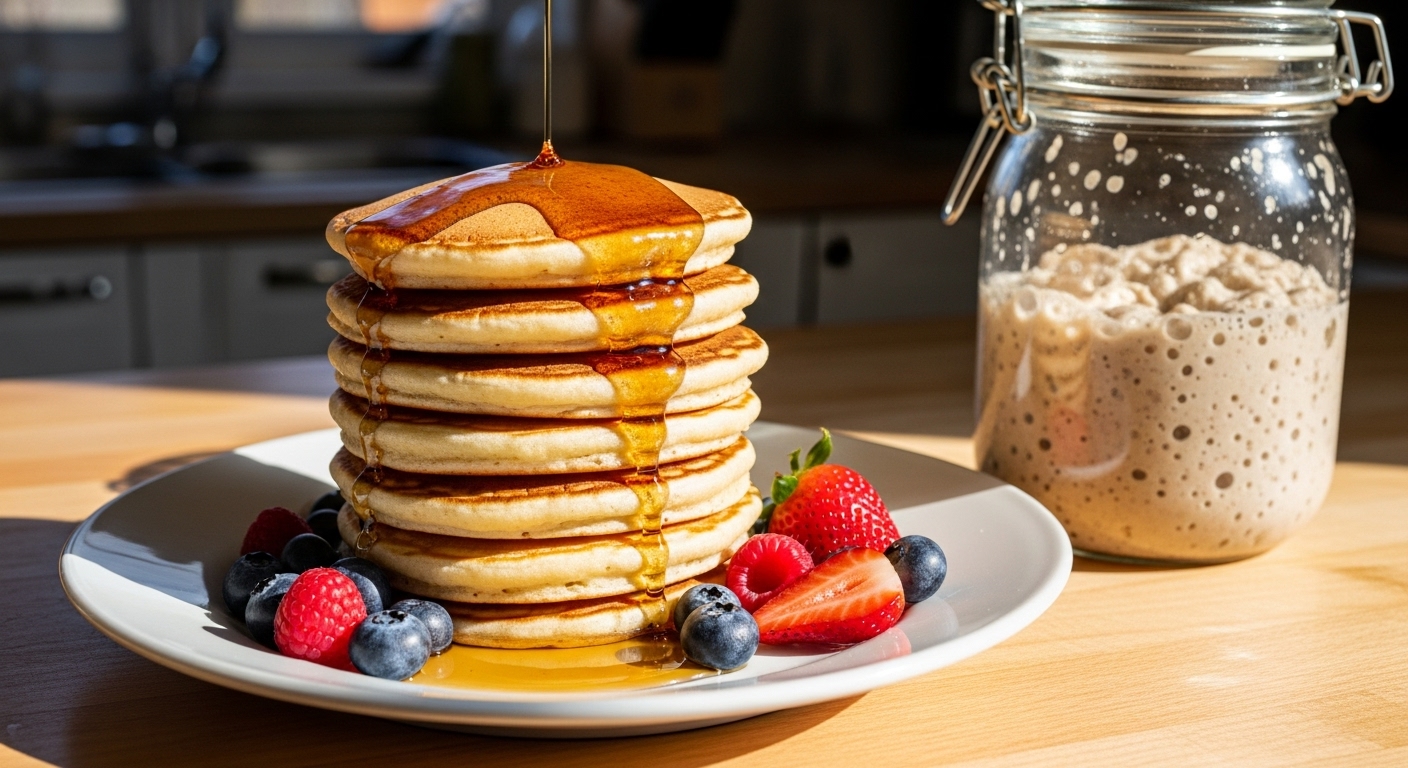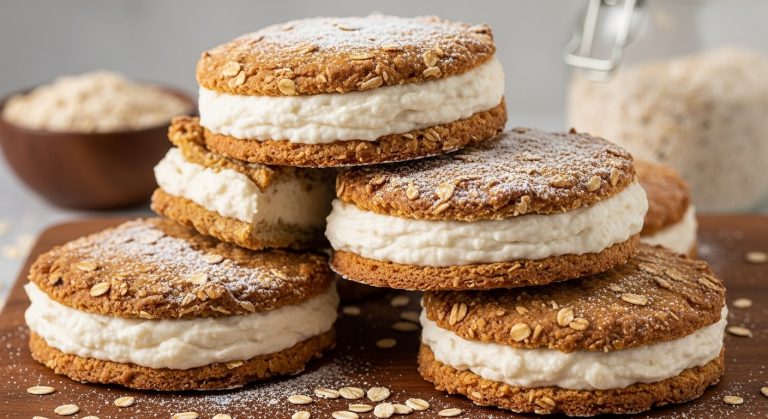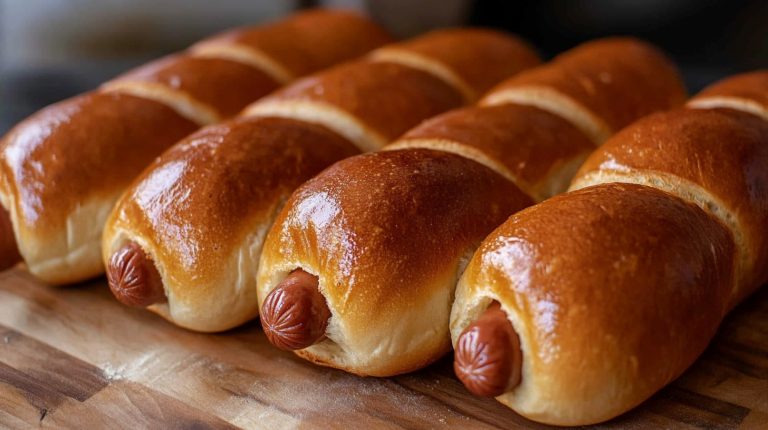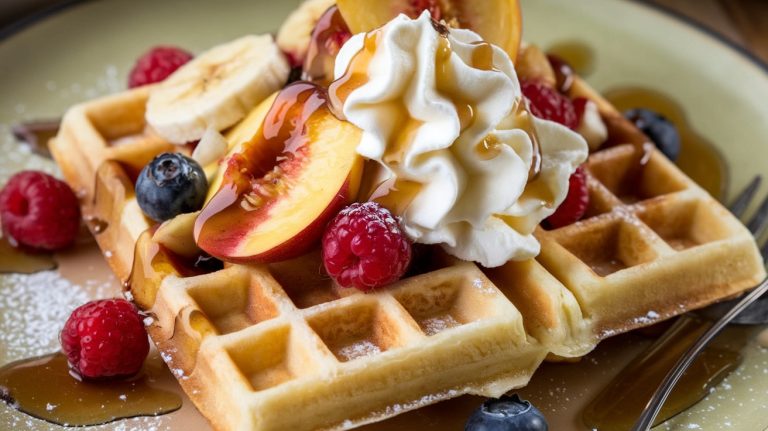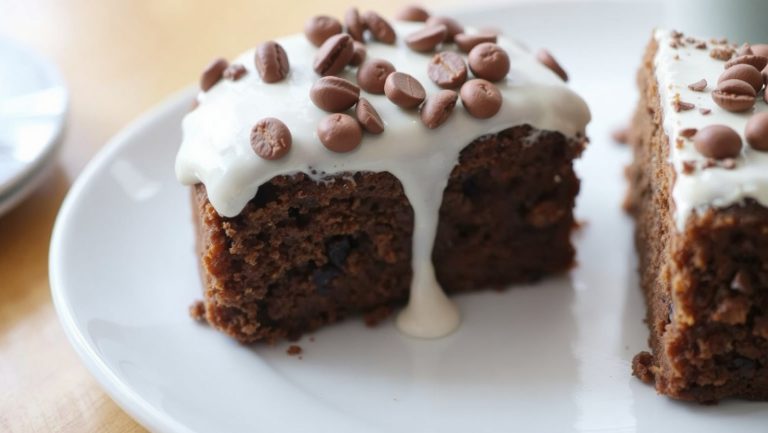How to Add Sourdough Discard to Any Recipe: Easy Tips & Tricks
You can easily add sourdough discard to recipes by replacing some flour and liquid, since discard is about half flour and half water.
It adds tangy flavor, moisture, and improves texture, making baked goods lighter and airier.
Adjust liquids slightly to keep dough consistency right, and try it as an egg substitute when mixed with flax or fruit puree.
Whether sweet or savory, discard enriches your dishes with probiotics and depth.
Stick around to explore creative ways to perfect your sourdough discard use.
Key Takeaways
- Substitute sourdough discard for part of flour and liquid, adjusting recipe hydration to account for its 100% hydration content.
- Use discard to replace eggs by combining it with flaxseed or fruit purees for binding and moisture.
- Incorporate discard to enhance flavor, adding mild acidity and a tangy complexity to both sweet and savory dishes.
- Store discard refrigerated and use within 1-2 days or freeze for long-term storage; thaw before use to maintain yeast activity.
- Experiment with small batches, adjusting fermentation times and fresh flour additions to optimize texture and reduce sourness.
Sourdough Discard Substitution Guide for Every Recipe
| Recipe Type | Sourdough Discard Amount | Flour Reduction | Liquid Reduction | Key Benefits | Best For |
|---|---|---|---|---|---|
| Pancakes & Waffles | 100-200g | 50g per 100g discard | 50ml per 100g discard | Extra fluffy texture, tangy flavor, tender crumb | Breakfast dishes, quick batters |
| Muffins & Quick Breads | 100-150g | 50g per 100g discard | 50ml per 100g discard | Enhanced moisture retention, improved rise, complex flavor | Sweet and savory muffins, banana bread |
| Cookies | 50-100g | 25-50g per 100g discard | 25-50ml per 100g discard | Chewy texture, balanced sweetness, subtle tang | Chocolate chip, oatmeal, peanut butter cookies |
| Crackers | 100-200g | No reduction needed | Minimal or no reduction | Extra crispy texture, bold tangy flavor, easy prep | Savory snacks, cheese boards |
| Pizza Dough | 100-150g | 50g per 100g discard | 50ml per 100g discard | Improved flavor depth, better crust texture, enhanced browning | Homemade pizza, flatbreads |
| Cakes | 75-125g | 40-60g per 100g discard | 40-60ml per 100g discard | Tender crumb, moisture boost, reduced sweetness intensity | Layer cakes, sheet cakes, chocolate cakes |
| Biscuits & Scones | 50-100g | 25-50g per 100g discard | 25-50ml per 100g discard | Flaky layers, tangy richness, improved tenderness | Breakfast pastries, tea accompaniments |
The Basics of Sourdough Discard
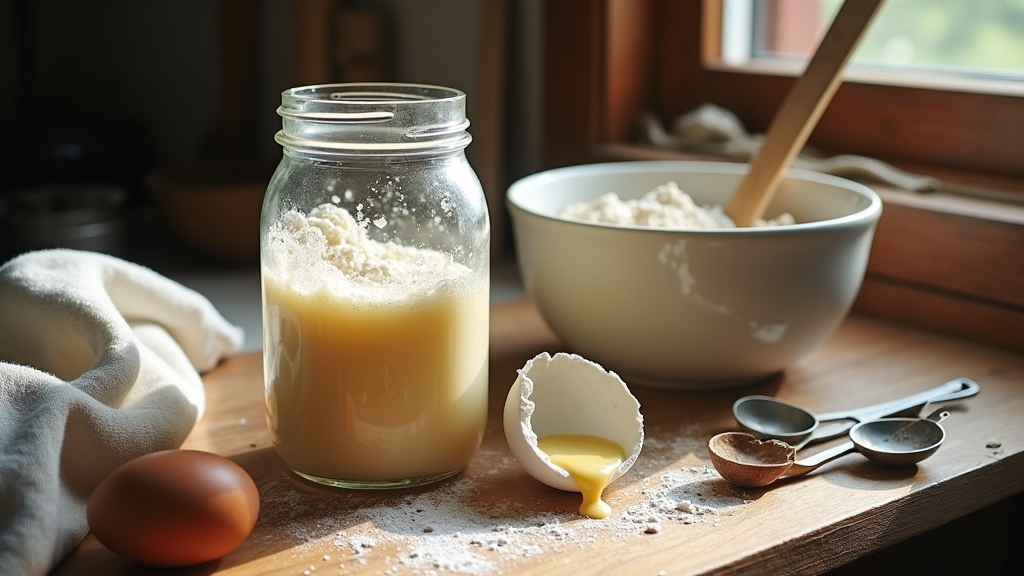
Although sourdough discard might sound like waste, it’s actually a valuable byproduct of maintaining your sourdough starter. When you feed your starter, you remove a portion, the discard, to keep it manageable and healthy.
This discard is fundamentally overripe starter that’s finished its fermentation cycle, rich with wild yeast and lactic acid bacteria but inactive since it’s unfed. Discarding prevents your starter from becoming too acidic or large, which can throw off its balance.
You can store the discard in the fridge, where it stays viable for days or weeks. It’s thicker than fresh flour mixtures and carries mild acidity, adding unique flavor and texture when used in recipes. Using discard in pancakes, waffles, and other baked goods is a popular way to minimize waste and add complexity to your dishes, making it a versatile ingredient.
Nutritional Advantages of Using Sourdough Discard
When you incorporate sourdough discard into your recipes, you’re not just adding flavor. You’re boosting nutritional value in several meaningful ways.
This unique ingredient delivers probiotics that support your gut health, enhances mineral absorption, and helps regulate blood sugar levels. Even after baking, fermentation byproducts continue benefiting digestion and immunity. Although the baking process destroys live probiotics, the prebiotic content in sourdough still supports a healthy gut microbiome.
Sourdough discard supports gut health, boosts mineral absorption, and aids blood sugar regulation even after baking.
Gut-friendly probiotics and prebiotics improve microbiome diversity and aid nutrient absorption.
Enhanced mineral bioavailability from reduced phytic acid helps your body better absorb iron, zinc, and magnesium.
Lower glycemic index and partial gluten breakdown promote balanced blood sugar and may improve gluten tolerance.
Using sourdough discard is a smart way to enrich your meals with fiber, vitamins, and minerals while supporting metabolic and digestive health. Regular feeding of the starter following Martha’s formula ensures the discard remains healthy and nutrient-rich.
How to Properly Store and Prepare Your Sourdough Discard?
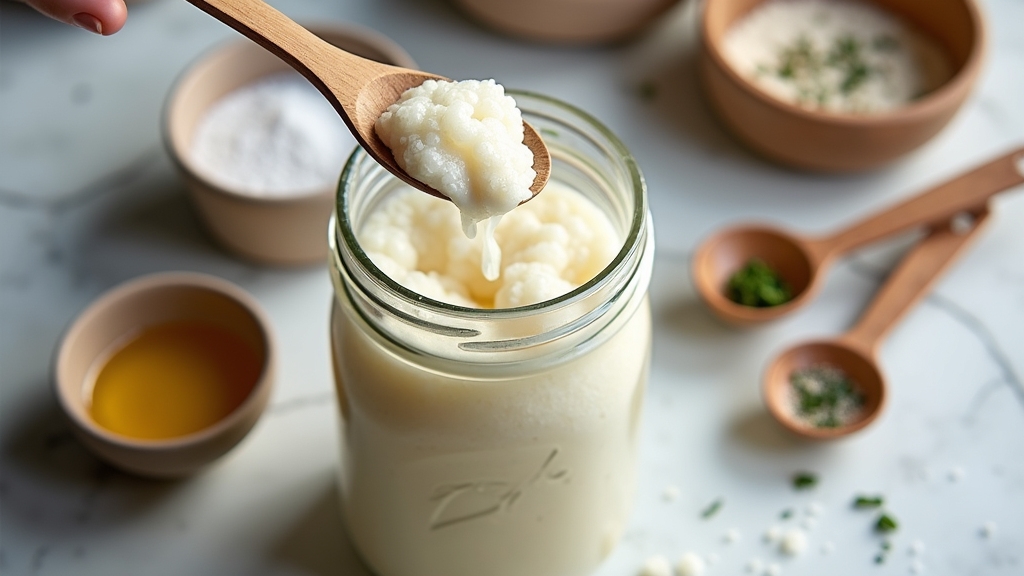
Since sourdough discard continues to ferment even after removal from the starter, proper storage and preparation are essential to maintain its quality and usability.
Store discard in a non-porous container like a glass jar with a loose lid to let gases escape. At room temperature, use discard within 1-2 days to avoid excessive sourness. Discard can ferment and rise significantly in the fridge, indicating active fermentation even without frequent feeding. Maintaining an optimal temperature range during storage helps preserve the discard’s yeast activity and flavor balance.
For longer storage, refrigerate it up to two weeks or freeze indefinitely, thawing naturally before use. Regularly remove excess discard and occasionally feed it to balance its activity and acidity.
When preparing discard for recipes, mix it according to instructions, adjusting liquids since discard adds moisture. Fresh discard is bubbly and active, while stored discard may be less so but still imparts a pleasant sour flavor that enhances baked goods and savory dishes alike.
Substituting for Eggs and Flour in Recipes
Did you know you can swap out sourdough discard for eggs in a bunch of recipes? It’s super easy! Just mix it with some flaxseed meal or fruit purees. This trick helps keep everything together and adds a nice moist texture, especially when measured with a precise baking scale.
Now, when you decide to use sourdough discard instead of flour, there’s a little more to think about. You’ll need to adjust your dry and liquid ingredients because the discard is basically half flour and half water. This can change how your dough feels and behaves, so keep that in mind! Since sourdough discard is essentially fermented flour, it brings both flavor and fermentation benefits to your recipes.
But don’t worry, these substitutions aren’t just about replacing ingredients. They actually bring a subtle tang to your baked goods and improve binding and rise. So, you end up with something that’s not just good but uniquely flavorful and well-structured.
Egg Replacement Tips
Although eggs play an essential role in binding, leavening, and adding moisture to many recipes, you can effectively substitute them with sourdough discard in certain baked goods like cookies and breads. Using sourdough discard, especially combined with a flax egg (ground flaxseed soaked in water), enhances binding and moisture, making it a great egg alternative in these recipes.
Additionally, sourdough discard can be used to make a unique type of flatbread known as Chinese Egg Flatbread, which combines a crispy exterior with a soft egg filling inside. Keep in mind, this substitution isn’t ideal for cakes or recipes needing strong leavening. Controlling fermentation time when using sourdough discard can help moderate the sourness it adds to your baked goods.
Here are some tips for success:
- Mix 1 tablespoon flaxseed with 2½ tablespoons water; add sourdough discard for a better binder.
- Reduce flour by about three tablespoons when replacing eggs with discard in cookies.
- Adjust liquid amounts, as sourdough discard adds moisture and affects texture and flavor.
Flour Substitution Guide
Beyond replacing eggs, sourdough discard can also substitute for flour and liquids in many recipes, balancing hydration while adding flavor and moisture.
Since discard is 100% hydration (equal parts flour and water by weight), reduce the recipe’s flour and liquid each by half the discard weight. Use a scale for precise adjustments, especially in batters needing consistent texture. Additionally, incorporating discard can enhance flavor profiles and help baked goods stay moist due to its natural acidity.
| Recipe Type | Flour Reduction (per 100g discard) | Liquid Reduction (per 100g discard) |
|---|---|---|
| Muffins | 50g | 50g |
| Pancakes | 50g | 50g |
| Quickbreads | 50g | 50g |
| Crackers | Usually no change | Usually no change |
| Cakes | 50g | 50g |
Use caution in recipes without liquid, reducing eggs or discard amount to maintain balance.
Enhancing Flavor and Texture

When you toss some sourdough discard into your recipes, it’s like giving them a little flavor boost! You’ll notice this delightful tangy taste that really brightens up every bite.
And let’s not forget about the texture—it helps create that light and airy feel we all love, thanks to those natural fermentation bubbles. This tanginess is similar to the flavor profile found in cultured butter, which also benefits from fermentation.
Plus, sourdough discard is a game-changer when it comes to moisture. It balances things out perfectly, ensuring your baked goods stay tender without turning into a soggy mess. Isn’t that awesome?
Additionally, sourdough discard contains probiotics that support a healthy gut microbiome, enhancing overall digestion and immune function.
Tangy Flavor Boost
Since sourdough discard contains organic acids like lactic and acetic acid, it naturally adds a distinctive tangy flavor that can elevate your baked goods.
This tang enriches the taste, offering a mild to pronounced sour note depending on your discard’s age and fermentation time.
When you add discard, you create a flavor boost that sets your homemade treats apart from those made with commercial yeast alone, much like how artisan pizza peels enhance the delicate handling of specialty doughs.
Try using sourdough discard to:
Add a sharp, almost cheesy tang to savory crackers or cookies.
Balance sweetness with acidity in cakes and quick breads.
Enhance umami and aromatic complexity in pizza dough or herb crackers.
This simple addition layers flavors, making your baking uniquely flavorful and memorable.
For example, sourdough discard can be used to make thin, crispy crackers that are perfect for snacking or charcuterie boards.
Light, Airy Texture
Although sourdough discard is often thought of mainly for flavor, it also plays an essential role in creating a light, airy texture in baked goods.
When combined with commercial yeast, discard helps your dough rise quickly, producing a tender crumb with delicate air pockets.
Using warm water activates yeast and speeds fermentation, enhancing puffiness.
Opting for bread flour or adding vital wheat gluten strengthens gluten networks, trapping gases that create that desired spongy structure.
Proper proofing until the dough doubles lets fermentation develop an open crumb. Using a waterproof cover during proofing can help maintain dough moisture and freshness.
The natural acids and bacteria in discard improve dough extensibility, preventing dense textures.
Scoring before baking and moderate oven temperatures help maintain internal airiness.
Incorporating ingredients like eggs or neutral oils with discard further softens and tenderizes crumb texture, making your breads and batters irresistibly light and airy.
This method is versatile, allowing you to substitute ingredients such as neutral-flavored oil or all-purpose flour to customize your bread’s softness and crumb.
Balanced Moisture Content
Achieving the perfect light and airy texture with sourdough discard depends heavily on maintaining balanced moisture in your recipe. Since discard is typically 100% hydration, equal parts flour and water, you need to subtract those amounts from your original recipe to keep the dough or batter consistent. This balance prevents overly wet or dense results and preserves the tender crumb you want.
Keep these points in mind:
- Subtract flour and water equal to the discard’s weight to maintain hydration balance.
- Older discard may be more watery or acidic, so adjust liquids and flavors accordingly.
Proper moisture control enhances the tangy flavor discard adds, similar to buttermilk or yogurt. Calculating total dough hydration accurately requires accounting for the flour and water contributed by the discard based on its hydration percentage.
Creative Ways to Incorporate Sourdough Discard in Sweet Dishes

When you add sourdough discard to sweet recipes, you open a world of flavor and texture that elevates everyday desserts into memorable treats. Using discard is a great way to practice zero waste in your kitchen while enjoying delicious results.
Try incorporating it into cakes like chocolate or carrot, where its subtle tang deepens richness and moistness.
For cookies, sourdough discard enhances chewiness in chocolate chip, peanut butter, or oatmeal varieties, balancing sweetness with a hint of acidity.
Quick desserts like lemon bars and skillet chocolate chip cookies become easier and more flavorful with discard’s natural leavening. It’s important to bring discard to room temperature for best results in baking.
Techniques like softening butter or gently pressing fruit into batter help maintain texture and rise.
Using sourdough discard not only reduces waste but also adds complexity, tender crumb, and moisture retention.
This makes your sweet creations stand out with nuanced flavor and satisfying texture.
Using Sourdough Discard in Savory Recipes
Sweet recipes showcase sourdough discard’s ability to add moisture and complexity, but its potential in savory dishes is just as impressive.
When you add discard to savory recipes, you gain a tangy flavor boost and improved texture. Think lighter, airier breads or crispier crackers. Plus, you reduce waste by using what would otherwise be tossed. Many savory sourdough discard recipes are quick and require minimal hands-on time, making them convenient for busy cooks easy to prepare.
Try incorporating sourdough discard into these savory favorites:
- Sourdough pizza dough for a tangy, chewy crust.
- Vegetable fritters that stay moist and flavorful.
- Whole wheat crackers with herbs for a perfect snack.
Tips for Experimenting and Perfecting Your Sourdough Discard Recipes
Although sourdough discard brings unique flavors and textures to your recipes, mastering its use requires thoughtful experimentation and fine-tuning.
Start by testing small batches to see how discard quantity affects rise, flavor, and texture. Adjust hydration and fermentation times to control sourness intensity. Remember that discard from a refrigerated starter may behave differently than discard from one kept at room temperature.
Supplement discard with fresh flour and water before use to boost yeast activity and reduce sharp acidity. Taste your dough during preparation and add a pinch of baking soda if it tastes overly sour.
Store discard refrigerated to slow fermentation and maintain balanced acidity. Use it sooner rather than later for best results.
When adapting recipes, replace flour and water proportionally to account for discard’s hydration. Track changes over time to perfect your approach.
Don’t hesitate to explore beyond bread—try pancakes, crackers, or cookies to expand your sourdough discard repertoire.
Frequently Asked Questions
Can Sourdough Discard Be Frozen for Long-Term Storage?
Yes, you can freeze sourdough discard for long-term storage.
Freeze it after feeding when it’s most active to keep yeast alive. Portion discard into airtight, freezer-safe containers or trays, label them clearly, and store in the coldest part of your freezer.
It stays good for 6–12 months, though using it within 3–6 months guarantees the best flavor and fermentation.
Thaw gradually and feed before baking to reactivate it.
Does Sourdough Discard Lose Nutritional Value Over Time?
No, sourdough discard doesn’t lose much nutritional value over time. Its probiotics remain beneficial for your gut health, and the fiber and B vitamins stay mostly intact.
However, the discard does become more acidic and sour as it ages, which can affect flavor but not nutrition.
To keep it fresh and nutritious longer, store it in the fridge and use it within a week or freeze it for extended storage.
How Does Sourdough Discard Affect Baking Rise and Texture?
Wondering how sourdough discard impacts your bake’s rise and texture?
It has limited leavening power since its yeast is less active, so you’ll often get a denser crumb unless you add baking soda or powder.
Discard’s acidity softens gluten, creating a tender, sometimes softer texture. It adds moisture too, making baked goods more delicate.
Just remember to balance liquids and leavening agents to avoid gummy or heavy results in your final product.
Can Sourdough Discard Be Used in Gluten-Free Recipes?
Yes, you can definitely use sourdough discard in gluten-free recipes.
It adds tangy flavor, moisture, and softness, improving texture and shelf-life while keeping baked goods tender.
Just tweak hydration and add binders like xanthan gum if needed.
It works well in crackers, pancakes, muffins, and more, making your gluten-free baking tastier and less wasteful.
Plus, it helps avoid commercial yeast, keeping your baking natural and traditional.
Are There Any Safety Concerns When Consuming Sourdough Discard?
Think of sourdough discard like a wild river; it can be safe or risky depending on how it’s handled.
You shouldn’t eat raw discard since it contains uncooked flour and possibly harmful bacteria, especially in the first week. Always cook it to kill germs.
After about 7 days, mature discard is safer and packed with probiotics. Store it properly in the fridge, check for mold or off smells, and you’ll enjoy it without worries.
Sourdough Discard Recipe Hacks Revealed
Now that you know how to add sourdough discard to any recipe, imagine the delicious possibilities waiting in your kitchen!
By embracing this tangy treasure, you’re not just reducing waste; you’re elevating flavor and nutrition with every bite.
So go ahead, experiment boldly, and watch your everyday dishes transform into something spectacular.
Remember, sourdough discard isn’t just an ingredient; it’s a secret weapon ready to turn ordinary into extraordinary.

